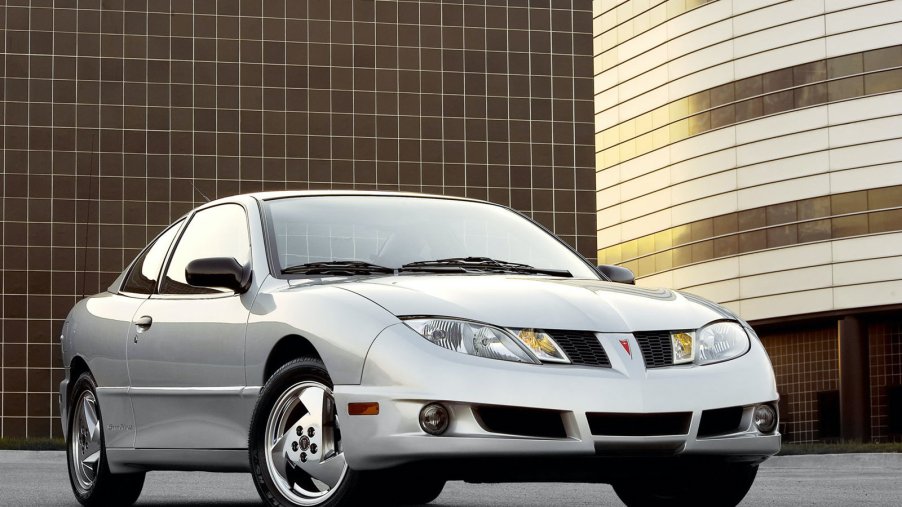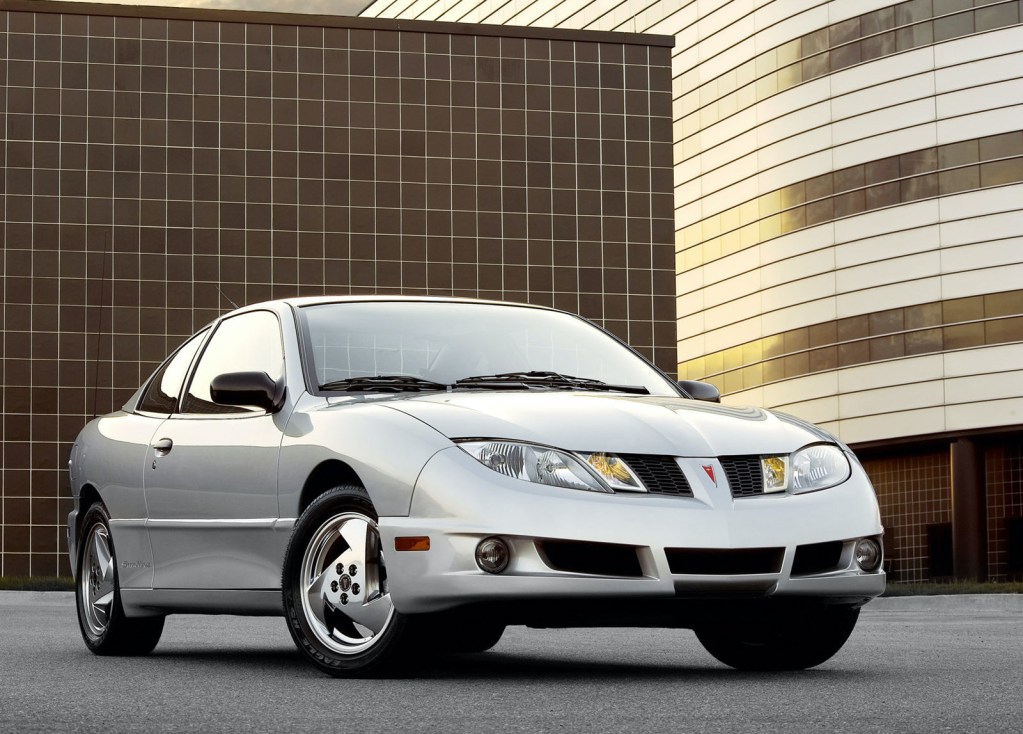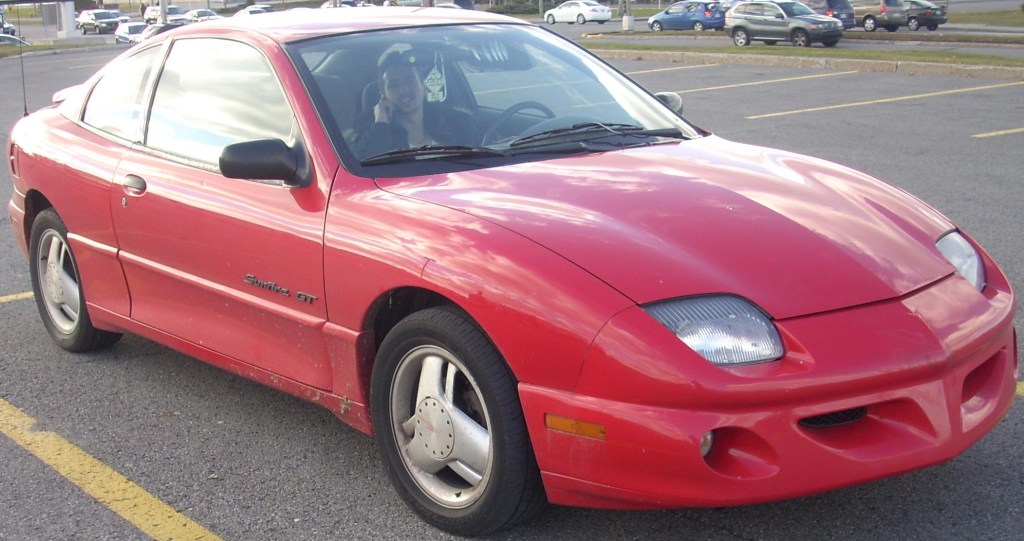
The Pontiac Sunfire GT Is a 90s Sleeper Sports Coupe That You All Slept on
When you think of a front-drive sports coupe from the 90s, which car comes to mind? A Honda Civic Si? A Mitsubishi Eclipse? Or maybe even Hyundai Tiburon? No matter which came to your mind first, it probably wasn’t a Pontiac Sunfire. It’s a shame too because that car was actually quite the sleeper in its time.
The Pontiac Sunfire replaced the Sunbird

Back in the 1970s, when front-drive Japanese commuter cars started getting popular in America, General Motors took notice and made its own platform dedicated to compact cars. According to Hot Cars, this platform would be referred to as the “J-Body” and it would continue to run successfully from 1981 to 2005. While the J-Body platform was used in a multitude of GM models including the Chevy Cavalier and Buick Skyhawk, the first Pontiac model to use it was the Sunbird.
The Sunbird was the brand’s commuter entry that came in coupe, sedan, wagon, and hatchback form, however, it was discontinued in 1994. This led to the advent of the 1995 Pontiac Sunfire, which was a solid commuter car that checked all of the boxes when it came to unique styling (at the time), but it wasn’t that much of a performer. In fact, the coupe, sedan, and convertible body styles that the Sunfire came in were all powered by the same 120-hp, four-cylinder engine – until the GT model came out.
The Pontiac Sunfire GT added a little more firepower under the hood
Much like how Honda created the Civic Si has a slightly more-powerful variant to the other commuter-friendly trim levels, Pontiac came up with the Sunfire GT. The main difference between the Sunfire GT and the base trim lied under the hood. Instead of the anemic 2.2-liter engine, the GT came with a revised 2.3-liter Quad-4 engine that was equipped with balance shafts for a smoother operation in addition to producing 150 hp and 145 lb-ft of torque.
This upgraded powerplant could be mated to either a five-speed manual or a four-speed automatic transmission – the latter being a first for any J-Body car. As far as performance, the Sunfire GT was able to go from 0 to 60 mph in 7.8 seconds, which was quick for the time period. Especially when you compare it to other commuter cars like the Honda Civic and Toyota Paseo, which both took around two more seconds to get the same speed, depending on the trim level.
The Sunfire GT flew under the radar and was discontinued in 2005

In the early 2000s, the Pontiac Sunfire was seen as an affordable commuter car that achieved excellent fuel economy at the time – but the GT model largely flew under the radar. In fact, most GT owners were likely unaware of the heightened performance of the car or that it could be slightly modified and made faster with some aftermarket components. Instead, the people that bought them focused more on its EPA-estimated fuel economy ratings of 23 mpg in the city and 32 on the highway since gas prices were on the rise.
Nonetheless, the Pontiac Sunfire GT, and the nameplate itself, was discontinued in 2005. The J Body platform itself was also discontinued to make way for the new GM Delta platform, which was used on the Chevy Cavalier and the Pontiac G5. After that, the Pontiac brand was soon phased out altogether.
You can still find a Pontiac Sunfire for cheap
The Pontiac Sunfire had a starting MSRP of around $15,000 back in 2005, but you can find one for a lot cheaper nowadays. A nationwide Autotrader search reveals that many Sunfires from different model years are selling for under $3,000. But if you want a GT model, then you may have to shell out around $3,500 for one. Just don’t be surprised if it’s rough shape. After all, the car is nearly 20 years old, but it’s still a front-drive sleeper.



